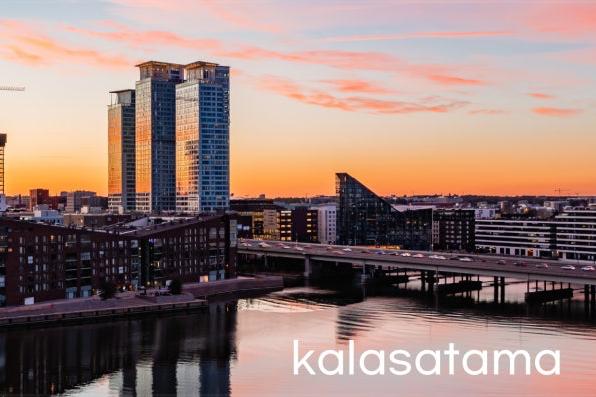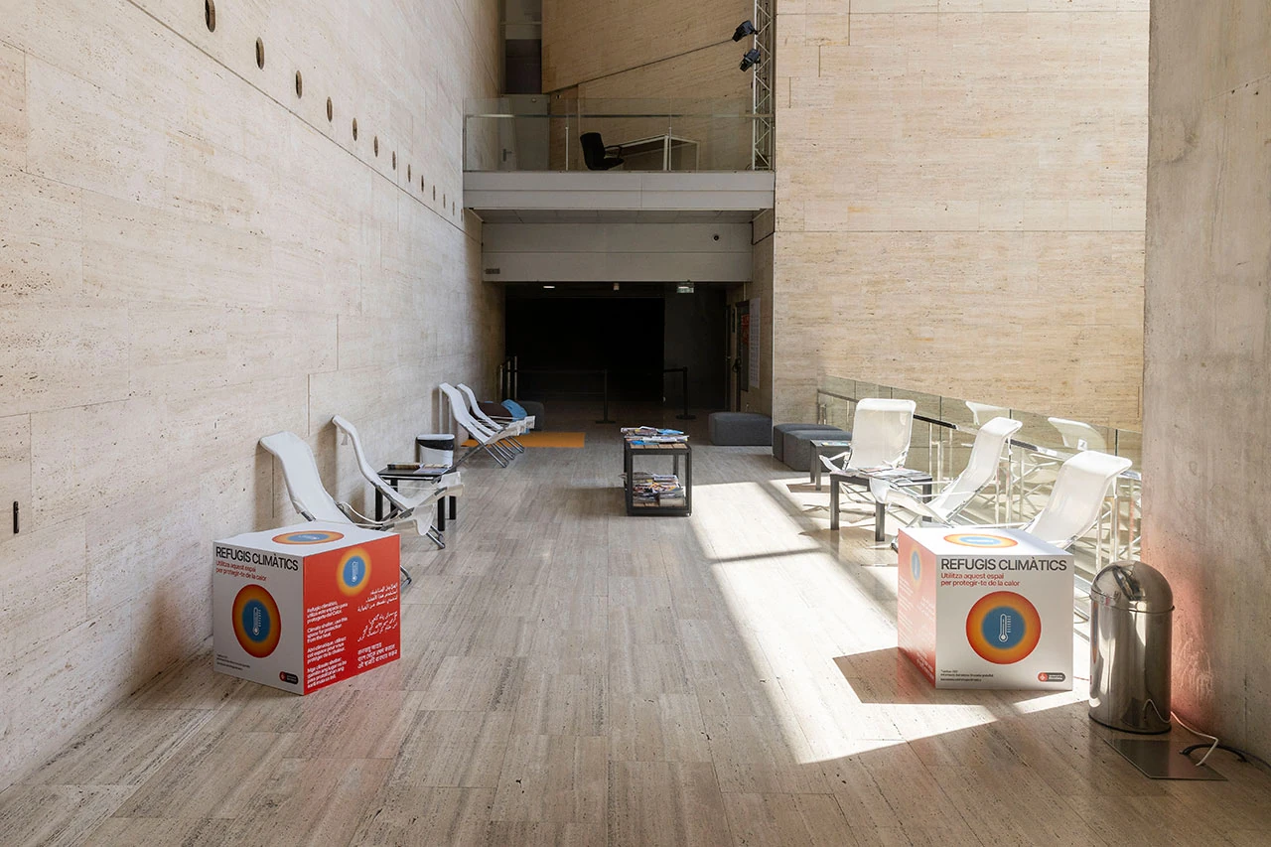Finland is not a particularly familiar country to many of us. For most people, it simply brings to mind a snowy, cold land where Santa Claus lives—a place with roaring fireplaces and reindeer pulling sleighs. But Finland is far from being just an analog fantasy. It is, in fact, a powerhouse of smart technology, actively pursuing digital innovation more than most countries. In particular, the capital city of Helsinki is taking bold steps to reduce carbon emissions by leveraging smart, low-carbon technologies, aiming to achieve carbon neutrality by 2035. In the “2020 Smart City Index,” Helsinki ranked second among 118 cities worldwide. At the forefront of these efforts is Kalasatama, a district that stands as the iconic model of a Finnish-style smart city.
Just over a decade ago, one of the most iconic “Made in Finland” products—right up there with Santa’s Village—was the Nokia phone. At one time, Nokia dominated the global mobile phone market, holding the top spot in market share. However, the company began to decline as it failed to adapt swiftly to changes in the market, eventually being sold to Microsoft in 2013. Although Finland’s Nokia era came to an end, the country did not fall into despair. While Nokia itself was sold, the talented individuals who built the company remained. These former Nokia employees branched out across various sectors, founding startups of their own. The Finnish government supported the creation of this new startup ecosystem through the Finnish Funding Agency for Technology and Innovation (TEKES). As a result, Finland emerged as a true hub of innovation in the Nordic region. One media outlet even called it “the gift of Nokia.”
It was against this backdrop that Smart Kalasatama was born. In 2013—the same year that Finland’s flagship company, Nokia, was sold to an American corporation at a bargain price—the Smart Kalasatama project officially got underway and began gaining momentum.
From Abandoned Harbor to Smart Innovation District
Kalasatama is located about one kilometer north of downtown Helsinki. In terms of Korean administrative divisions, it is part of the Sörnäinen district within the city of Helsinki. Covering an area of 0.70 square kilometers—roughly one-quarter the size of Yeouido (2.9 ㎢)—it is currently a small neighborhood with a population of around 4,000. Of course, that’s the present. Kalasatama is rapidly evolving, and its future will look quite different. According to development plans, by around 2040, land reclamation projects will expand the area to 2.5 times its current size. The district is expected to create 10,000 jobs in innovation-driven industries and grow to a population of approximately 30,000.
Kalasatama, which had been nothing more than a nondescript cargo harbor, entered a turning point when the port was closed in 2008. The Helsinki city government turned its attention to Kalasatama, located close to the city center, as a potential area to accommodate the growing population. Together with Helen Ltd, the city’s energy company, they devised a plan to transform Kalasatama into Finland’s largest pilot district for smart energy solutions. In 2013, the Helsinki City Council officially approved the plan. The city aimed to make Kalasatama a fully functional smart city integrated into daily life. To this end, in 2014, “Forum Virium Helsinki” was established as an innovation company under the city government. It serves as a living lab and innovation platform where local residents, businesses, and researchers can freely propose ideas and test innovative solutions. This marked the official launch of the Smart Kalasatama project.
Sustainable and Smart Energy Production and Consumption
Sustainable clean energy is crucial for the well-being of local residents. Looking over the Kalasatama district, one can easily spot a large red brick building by the sea—the Hanasaari power plant. Originally established as a coal-fired power plant in the 1970s, Hanasaari was converted into a biomass power plant in the late 2010s. Even now, 80% of the electricity produced by Hanasaari comes from wood pellets made from discarded timber. However, perhaps due to ongoing debates over the environmental friendliness of biomass, the plant is scheduled to be shut down as of April 1, 2023.
Kalasatama has focused on producing electricity locally using clean energy sources. In the spring of 2015, the Suvilahti solar power plant was established next to the Hanasaari power plant. It is equipped with 1,194 solar panels, each with a capacity of 285 watts. Although the plant is operated by Helen, the city-owned energy company, each of the 1,194 panels has a different owner. Any Helsinki resident can choose a panel they want and rent it for just €4.40 per month. Helen operates four such community-funded solar power plants across Helsinki through crowdfunding.
Including the Suvilahti solar power plant, all 6,800 solar panels have now been fully contracted. Just a short distance from Suvilahti, beneath Katri Vala Park, lies the Katri Vala Heating and Cooling Plant—the largest facility of its kind in the world. It utilizes wastewater heat and waste heat from buildings such as data centers to provide heating and cooling to the area. In 2017, the plant produced 570,000 MWh of thermal energy, supplying 8% of Helsinki’s heating demand. Building on this success, in 2021, an additional heat pump was installed, bringing the total to six and increasing production by 30% compared to 2017. By using wastewater and waste heat, the Katri Vala heating and cooling system has reduced carbon emissions by 80% compared to individual heating systems that rely on heavy fuel oil.
Kalasatama has also built facilities to store district heating energy, increasing energy efficiency while allowing heat to be drawn whenever needed. About 80 meters underground on Mustikkamaa Island lies a massive cave-like heat storage facility with a volume of 260,000 cubic meters. This is a uniquely Finnish, and the largest of its kind in Finland, underground heat storage facility.
The rock cave was originally used as a heavy fuel oil storage site from the 1980s to the 1990s. Helen began constructing the heat storage facility in 2019, completing it in 2021. The energy is stored as hot water ranging from 45°C to 100°C, with a storage capacity of 11.6 GWh. Construction finished around December 2020, and it took three months just to fill the cave with 320 million liters of water. Thanks to the Mustikkamaa cave heat storage, Helsinki can reduce its carbon emissions by 21,000 tons annually.
How energy is produced is important, but how it is used is equally crucial. Kalasatama’s smart grid system connects electricity generated by wind turbines to local electric vehicle charging stations and realizes carbon-neutral buildings through an intelligent energy management system. For example, homes in Kalasatama are equipped with smart interfaces that allow residents to monitor and control the real-time energy consumption of individual appliances. Additionally, the data generated is integrated with information about the food I consume, providing services that show my daily carbon footprint and offer guidance on how to make more climate-friendly choices in everyday life.
People-Centered Smart Mobility & Smart Living
The vision of Smart Kalasatama is “One More Hour a Day.” Through smart solutions that drastically improve energy, transportation, and logistics systems, the goal is to reduce unnecessary time waste and give people an extra hour of free time each day. Kalasatama has made enhancing residents’ quality of life its most important objective as a smart city.
To secure an extra hour of free time each day, the transportation system is of utmost importance. Kalasatama has a subway station directly connected to the city center, and a tram line linking key locations and train stations across Helsinki is currently under construction, with completion targeted for 2024. A well-integrated network of subway, bus, and tram services that connect all the way to people’s homes is essential for a smart city. As a self-proclaimed innovative living lab, Kalasatama has experimented with various futuristic transportation options, including Robobus, Finland’s first urban autonomous mini electric bus. Based on pilot operation data collected in Kalasatama, researchers are now testing an upgraded autonomous “Call Bus” capable of freely changing its route in other parts of Helsinki.
The top smart solution favored by Kalasatama residents is the waste collection system called “IMU.” Throughout Kalasatama, specially designed waste bins can be found in various locations. These bins are divided into five categories: food waste, paper, cardboard, plastics, and general waste. All the bins are directly connected via underground pipelines to a central waste collection facility, much like underground water and sewage systems. This system eliminates the need to wait for garbage collection days and the use of foul-smelling trucks. Waste is processed underground immediately upon disposal, making the process fast and efficient.
In the future, it seems that Smart Kalasatama will be seen throughout Finland. Six major cities, including Helsinki, have formed the “Six City Strategy” and are transforming into smart cities. Rising from Nokia’s failure, Finland is showing a more ambitious spirit. This is why the next decade for Finland is full of promise.
▶ This article is a contribution to the bimonthly magazine “A World Illuminated by Light” published by Korea Electric Power Corporation (KEPCO).
https://home.kepco.co.kr/kepco/front/html/WZ/2023_03_04/sub3_4.html











